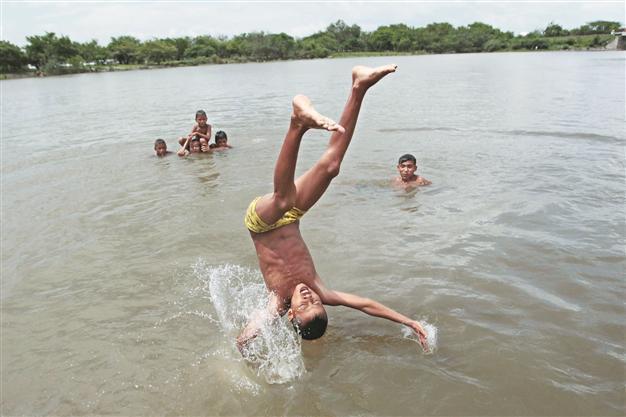Panama canal rival emerging
MANAGUA - Agence France-Presse

A boy jumps into the waters of Lake Managua. A would-be Nicaragua Canal considers using this large lake to connect the two oceans. Nicaragua says the canal will be larger and deeper than Panama. REUTERS photo
Nicaragua is pressing ahead with plans for a new $30-billion Panama-style canal linking the Atlantic to the Pacific, with China, Japan and South Korea reportedly expressing interest in the project.Nicaraguan President Daniel Ortega submitted a draft bill earlier this week that details six possible routes for the proposed waterway, one of which would pass through the San Juan River that forms part of the border with Costa Rica.
“We’ve had talks with Japan, China, Russia, Venezuela, Brazil and South Korea and everyone is interested” in contributing to the $30 billion mega-project, project director Eden Pastora told local television.
He added that Nicaragua’s conduit would be “larger and deeper” than the Panama Canal, currently the only man-made shortcut between the two oceans.
Feasibility studies are expected to cost $350 million while actual construction could hit $30 billion.
Pastora said the project would be carried out by a joint venture in which the government would own 51 percent of shares and tenders would be issued for the remainder.
The idea of building a canal across Nicaragua dates back centuries, but was overtaken by the construction of the 82-kilometer Panama Canal.
In recent years, however, Nicaraguan governments have revived the concept as a way to promote development of the country, the second poorest in the Americas after Haiti.
The idea has led to some controversy.
In late 2010, Nicaragua sparked a diplomatic row with Costa Rica when it began dredging the San Juan, leading Costa Rica to accuse it of invading a small island in the river. The dispute has gone to the International Court of Justice in The Hague.
Border issues
Costa Rica on June 6 demanded an explanation over the plans, with the foreign ministry saying that Nicaragua was free to develop infrastructure projects on its own territory but must adhere to relevant border treaties.
Ortega countered that Nicaragua had the right to build in the disputed waterway, saying: “No one can forbid the option of constructing the canal in the San Juan River and Lake Nicaragua.” The Panama Canal is currently undergoing a major $5.25-billion project, set to be completed in 2014, to expand its choked capacity. The expansion will allow some of the world’s largest ships to pass through.
The vital waterway handles five percent of world trade annually, and has hosted more than one million vessels since it was inaugurated in 1914. The United States handed over control of the canal to Panama on December 31, 1999. It also generated a record $1 billion for Panama in the fiscal year 2010-2011, for a total of $6.6 billion since the United States handed over control. As global trade increasingly shifts towards the Asia-Pacific region, China and other Asian countries are keen to build a backup inter-oceanic shortcut.
















